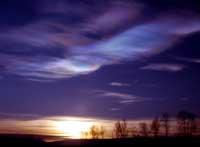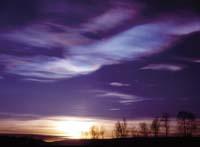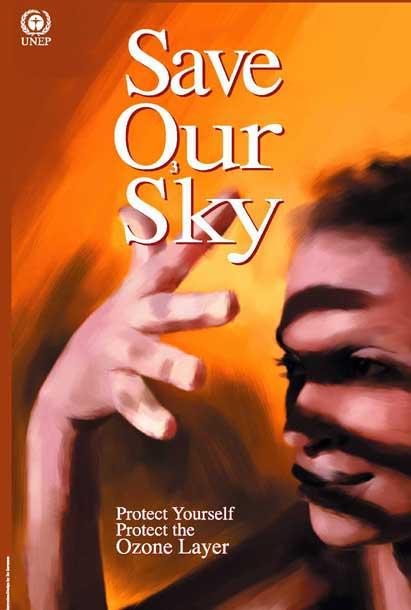The ozone layer, also vulnerable in the Arctic
2011/04/09 Galarraga Aiestaran, Ana - Elhuyar Zientzia
In particular, half of the existing ozone in recent weeks has been destroyed in the Arctic, according to the Alfred Wegener Institute for Pole and Sea Research (AWI). In addition, AWI researchers warn that if weather conditions persist, the situation will worsen even more. Therefore, this spring, in the high and middle latitudes of the northern hemisphere, special skin protection has been recommended.

According to researchers, half of the ozone layer on the Arctic has been lost these weeks. (Photo: R.J.Salawitch
In fact, the ozone layer is in the stratosphere, 15-35 km from the Earth's surface, and filters ultraviolet B (UVB) radiation from the Sun. Therefore, thinning the layer causes the Earth's surface to reach more radiation than normal, which increases the damage that this type of radiation causes in living beings.
In particular, UVB is associated with skin cancer: radiation causes changes in cellular DNA, which significantly increases the risk of developing cancer. This is why sunscreen creams incorporate an ultraviolet radiation filter.
In addition, ultraviolet B radiation also affects the eyes and weakens the immune system. It also causes damage to other living things, such as plants and aquatic ecosystems. That is, without the ozone layer the Earth would not be the present life.
However, when in the 1970s scientists discovered that some industrial gases (chlorofluorocarbons) destroyed the ozone layer, it cost society and politicians to worry about it. Finally, in September 1987, 29 countries signed the Montreal Protocol. Since then several protocol reviews have been made and other countries have committed not to use the gases that destroy the ozone layer.
In addition to Antarctica, in the Arctic
It has not been enough. Although for a few years, for example in 2007, it seemed that the ozone layer was recovering, the hole that forms over Antarctica has often been of concern. According to the winds, the time of year and other factors, the ozone layer is thinner in some places than in others, and is rather thin above Antarctica. And it has been further thinned by the action of chlorofluorocarbons, until drilling.
A similar situation has now occurred in the northern hemisphere, in the Arctic, and researchers believe climate change may be related. Greenhouse gases support heat in the lower layers of the atmosphere. This means that heat does not escape the stratosphere, causing an abnormal cold in the stratosphere. Cold increases the effectiveness of chlorofluorocarbons to destroy ozone. Therefore, there may be a relationship between climate change and the thinning of the ozone layer.
Researchers recognize that they do not yet know well the interaction between the climate and the ozone layer. Thus, there are several projects around the world that try to clarify aspects about it. On the one hand, they are optimistic: chlorofluorocarbons released into the atmosphere in the past will disappear over time and within a few decades the ozone layer will not be attacked by them. As long as the Montreal Protocol is maintained and no more gases are produced, of course.
Published in Gara

Gai honi buruzko eduki gehiago
Elhuyarrek garatutako teknologia





